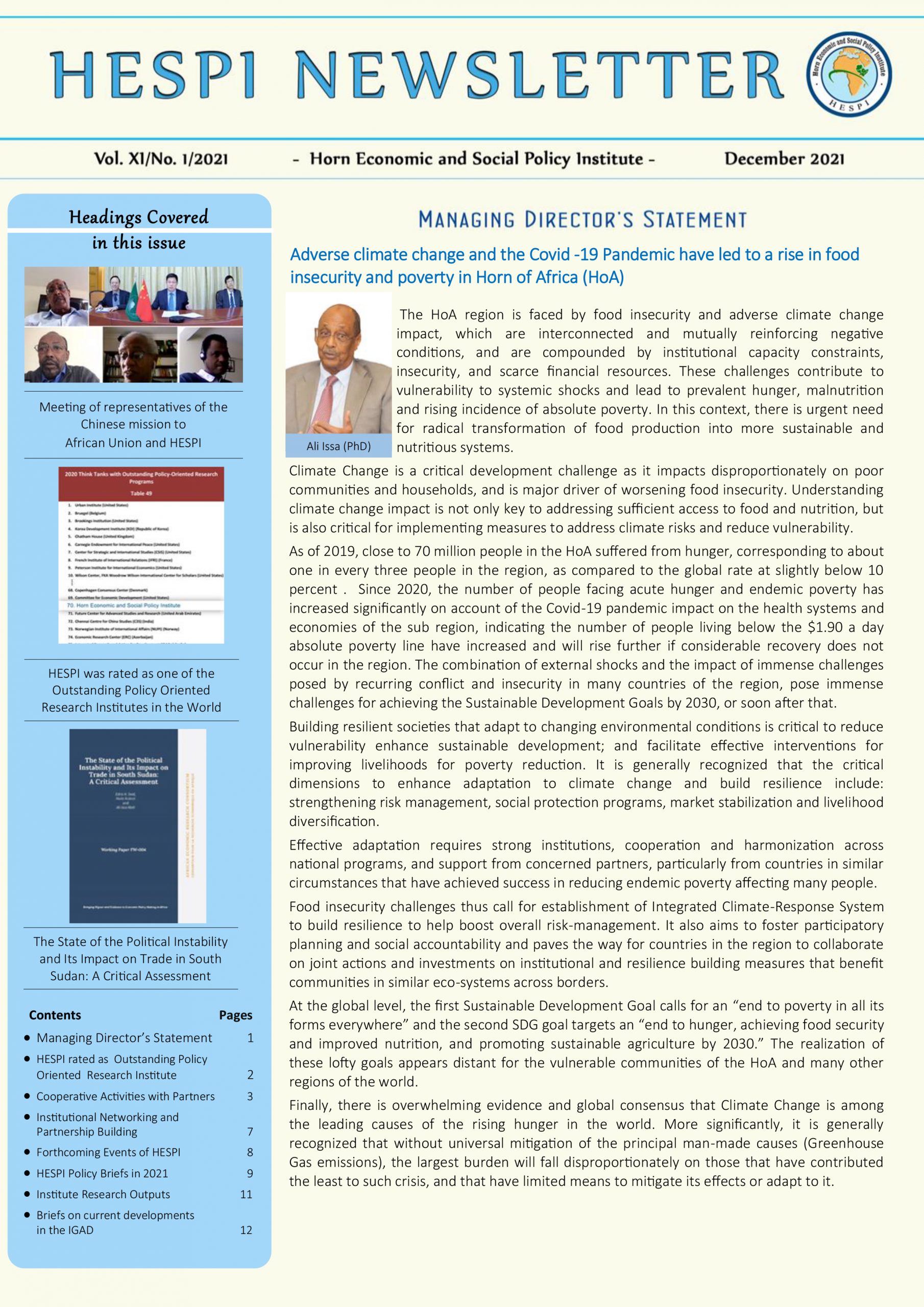HESPI NEWSLETTER, Volume XI/No.1/2021, December 2021
--------------------------------------------------------------------
 The HoA region is faced by food insecurity and adverse climate change impact, which are interconnected and mutually reinforcing negative conditions, and are compounded by institutional capacity constraints, insecurity, and scarce financial resources. These challenges contribute to vulnerability to systemic shocks and lead to prevalent hunger, malnutrition and rising incidence of absolute poverty. In this context, there is urgent need for radical transformation of food production into more sustainable and nutritious systems.
The HoA region is faced by food insecurity and adverse climate change impact, which are interconnected and mutually reinforcing negative conditions, and are compounded by institutional capacity constraints, insecurity, and scarce financial resources. These challenges contribute to vulnerability to systemic shocks and lead to prevalent hunger, malnutrition and rising incidence of absolute poverty. In this context, there is urgent need for radical transformation of food production into more sustainable and nutritious systems.
Climate Change is a critical development challenge as it impacts disproportionately on poor communities and households, and is major driver of worsening food insecurity. Understanding climate change impact is not only key to addressing sufficient access to food and nutrition, but is also critical for implementing measures to address climate risks and reduce vulnerability.
As of 2019, close to 70 million people in the HoA suffered from hunger, corresponding to about one in every three people in the region, as compared to the global rate at slightly below 10 percent . Since 2020, the number of people facing acute hunger and endemic poverty has increased significantly on account of the Covid-19 pandemic impact on the health systems and economies of the sub region, indicating the number of people living below the $1.90 a day absolute poverty line have increased and will rise further if considerable recovery does not occur in the region. The combination of external shocks and the impact of immense challenges posed by recurring conflict and insecurity in many countries of the region, pose immense challenges for achieving the Sustainable Development Goals by 2030, or soon after that.
Building resilient societies that adapt to changing environmental conditions is critical to reduce vulnerability enhance sustainable development; and facilitate effective interventions for improving livelihoods for poverty reduction. It is generally recognized that the critical dimensions to enhance adaptation to climate change and build resilience include: strengthening risk management, social protection programs, market stabilization and livelihood diversification.
Effective adaptation requires strong institutions, cooperation and harmonization across national programs, and support from concerned partners, particularly from countries in similar circumstances that have achieved success in reducing endemic poverty affecting many people.
Food insecurity challenges thus call for establishment of Integrated Climate-Response System to build resilience to help boost overall risk-management. It also aims to foster participatory planning and social accountability and paves the way for countries in the region to collaborate on joint actions and investments on institutional and resilience building measures that benefit communities in similar eco-systems across borders.
At the global level, the first Sustainable Development Goal calls for an “end to poverty in all its forms everywhere” and the second SDG goal targets an “end to hunger, achieving food security and improved nutrition, and promoting sustainable agriculture by 2030.” The realization of these lofty goals appears distant for the vulnerable communities of the HoA and many other regions of the world.
Finally, there is overwhelming evidence and global consensus that Climate Change is among the leading causes of the rising hunger in the world. More significantly, it is generally recognized that without universal mitigation of the principal man-made causes (Greenhouse Gas emissions), the largest burden will fall disproportionately on those that have contributed the least to such crisis, and that have limited means to mitigate its effects or adapt to it.
Dr. Ali Issa
